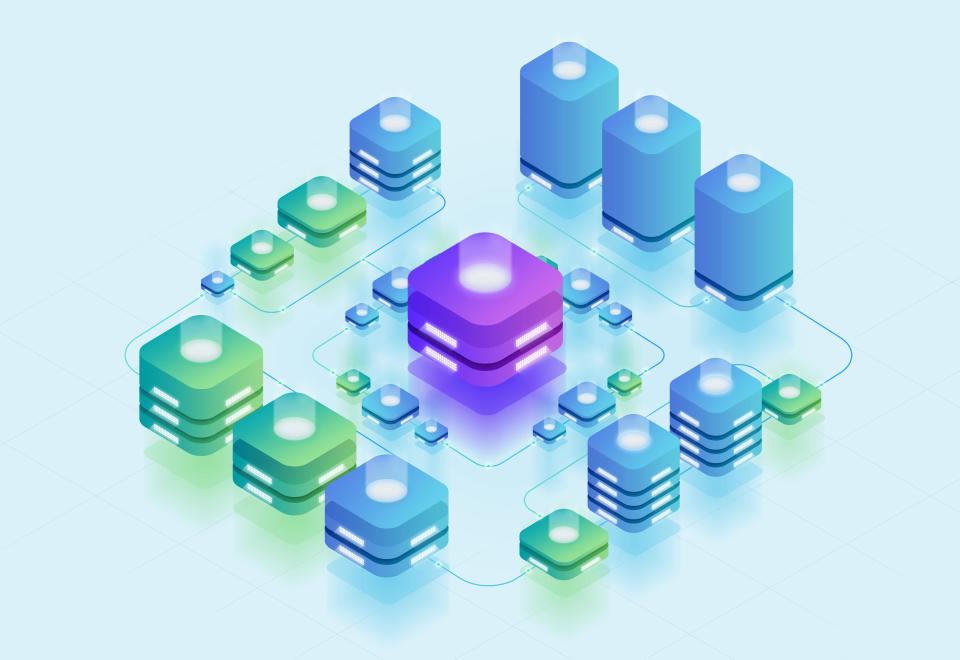Stop what you’re doing. Listen closely. Can you hear that? It’s the sound of money vanishing from your online store with every tick of the clock.
Did you know a tiny, one-second delay in your page load time can slash your conversions by a staggering 7%? According to conversion rate optimization best practices, that’s not just a lost visitor—it’s a lost sale, a lost customer, and a lost opportunity to dominate your market. You’ve poured your heart and soul into sourcing the best products, crafting beautiful product pages with high-resolution images, and adding powerful apps to create the perfect shopping experience, but those very assets could be strangling your success.
This guide is your antidote. We’re going to give you a clear, step-by-step roadmap to diagnose and obliterate the speed bottlenecks that are costing you a fortune. At CaptivateClick, our performance-boosting web development techniques have transformed countless online stores from sluggish liabilities into seamless, revenue-generating machines. Now, we're sharing our core strategies with you.
Step 1: Measure Before You Manage - Benchmarking Your Current Speed
Why You Can't Skip the Diagnosis
Trying to fix your site speed without first measuring it is like trying to navigate a ship in a storm without a compass. You’re flying blind, wasting time and energy on changes that might not even matter. You absolutely must establish a baseline to track your progress and celebrate your victories.
You can’t improve what you don’t measure. A thorough audit reveals the hidden anchors dragging your site down, turning vague feelings of "it feels slow" into a concrete, actionable hit list. According to Athos Commerce, conducting regular site speed audits across both desktop and mobile is a high-ROI strategy for any serious brand.
This initial diagnosis is your starting line. Every optimization you make from this point forward can be measured against it, proving the direct impact of your efforts on both speed and, ultimately, your bottom line. It’s the first step toward taking control.
Essential Tools for Your Speed Audit
You don’t need a complex lab to get started; you just need the right tools. Think of these as your diagnostic toolkit for uncovering the truth about your site's performance. Each one gives you a slightly different, yet critical, piece of the puzzle.
First up is Google PageSpeed Insights. This is Google’s official report card for your website, and it’s essential because it focuses heavily on Core Web Vitals—the very metrics Google uses as a ranking factor. A good score here isn’t just about speed; it’s about visibility.
Next, use GTmetrix. This tool is the detective’s magnifying glass, providing incredibly detailed waterfall charts that show you exactly which files, images, or scripts are taking the longest to load. It helps you pinpoint specific bottlenecks with surgical precision. Finally, add Pingdom to your arsenal to test load times from different geographic locations, ensuring a fast experience for all your customers, no matter where they are.
Decoding the Jargon: Key Metrics That Matter for E-commerce
Technical metrics can feel overwhelming, but for an e-commerce store, they translate directly into customer experience and sales. Let’s cut through the noise and focus on what truly matters. These are the numbers that reflect your customer’s real-world journey on your site.
- Largest Contentful Paint (LCP): Forget the technical term. This is simply: How quickly does your main product image or hero banner appear? If this is slow, your customer’s first impression is one of frustration.
- First Input Delay (FID): This translates to: How quickly can a user click 'Add to Cart' or use a product filter? A long delay here makes your site feel broken and unresponsive.
- Cumulative Layout Shift (CLS): Ask yourself: Does the 'Buy Now' button move unexpectedly as the page loads? If a customer tries to click and the button shifts, you may have just lost a sale due to pure annoyance.
- Time to First Byte (TTFB): This is the foundational metric. It’s the initial server response time—the first digital handshake between your store and the customer’s browser. A slow TTFB means everything that follows will also be slow.
Step 2: The Foundation - Optimizing Your Hosting and Infrastructure
Is Your Hosting Plan Holding You Back?
Let’s be brutally honest. If your e-commerce store is running on a cheap, shared hosting plan, you’re building your empire on quicksand. Shared hosting is like living in a crowded apartment building; if your neighbor decides to throw a massive party, the whole building suffers from the noise and traffic.
Your store’s traffic spikes, and another site on the same server can steal the resources you need, grinding your checkout process to a halt during your busiest moments. For a growing e-commerce business, this is unacceptable. Upgrading to a Virtual Private Server (VPS), dedicated server, or a managed cloud host is a non-negotiable step toward securing your revenue and providing a stable, reliable experience.
These superior hosting solutions give you dedicated resources, enhanced security, and the raw power needed to handle thousands of shoppers at once. It’s the difference between a flimsy tent and a fortified castle. For a deeper look, explore these proactive hosting strategies for performance.
The Global Advantage: Implementing a Content Delivery Network (CDN)
Imagine a customer in London trying to buy from your store hosted in Los Angeles. Every single product image, every line of code has to travel across the Atlantic. That journey takes time—milliseconds that add up to seconds, and seconds that cost you sales.
A Content Delivery Network (CDN) solves this problem instantly. It’s a global network of servers that stores copies of your site's static assets—like images, CSS, and JavaScript files. When that London customer visits your site, the CDN delivers the content from a local server in Europe, not all the way from California.
This simple change dramatically reduces latency and accelerates your site for a global audience. As highlighted in eCommerce SEO and speed best practices, using a CDN is a fundamental tactic for improving Core Web Vitals and delivering a world-class user experience. It’s your secret weapon for global domination.
Step 3: Picture Perfect Performance - Mastering Image and Media Optimization
The #1 Culprit: Unoptimized Product Images
Your stunning, high-resolution product photography is designed to make customers fall in love with your products. The cruel irony? Those beautiful, massive image files are often the number one reason they abandon your site in frustration.
You must tame these digital beasts without sacrificing quality. First, focus on compression. Use tools like TinyPNG to intelligently reduce file sizes, often by over 70%, with little to no visible difference. Next, embrace next-gen formats like WebP, which offers superior compression and quality compared to old-school JPEGs and PNGs.
Finally, and most critically, practice right-sizing. Never upload a 3000x3000 pixel image for a space that only displays it at 500x500 pixels. Resize your images to the exact dimensions needed before you upload them. For a more detailed walkthrough, check out this guide to advanced technical SEO for image optimization.
Implement Lazy Loading for a Faster Initial View
Think about a long category page with dozens of products. Does your customer’s browser really need to load the image of the 50th product at the very bottom of the page the second they arrive? Absolutely not.
This is where lazy loading comes in. It’s a simple but brilliant technique that tells the browser to defer loading any images or media that are "below the fold"—that is, outside the user's visible screen area. The images only load as the user scrolls down the page, right before they come into view.
This single change can dramatically improve your website load time, especially for the crucial initial view. It creates the perception of an almost instantaneous page load, satisfying the user's need for speed and getting them engaged with your products immediately.
Step 4: Under the Hood - Key Technical SEO and Code Optimizations
Cleaning Up Your Codebase
Your website’s code is its engine. Bloated, messy code is like an engine clogged with sludge—it’s inefficient and slow. It’s time for a tune-up.
Start by minifying your CSS, JavaScript, and HTML. This process removes all the unnecessary characters from your code—like spaces, comments, and line breaks—without changing its function. The result is smaller, leaner files that download in a flash.
Next, you must reduce render-blocking resources. Some scripts, particularly JavaScript, can act like a roadblock, preventing the rest of your page from appearing until they are fully loaded. By deferring the loading of non-critical scripts, you allow the essential visual content of your page to load first, dramatically improving the perceived performance for your users.
Leverage Browser Caching
Why force your customers to re-download your logo, your navigation menu, and your site’s stylesheet every single time they click to a new page? It’s a massive waste of time and bandwidth. Browser caching is the solution.
Think of it like this: you’re telling your customer’s browser to "remember" the core elements of your site. By implementing browser caching, you store these static files on the user’s local device. On subsequent page views, the browser can simply load these files from its memory instead of fetching them from your server all over again.
This creates a lightning-fast experience as users navigate your store. As noted in best practices for optimizing website speed, leveraging browser caching is a fundamental technique for reducing latency and server load.
Conduct a Plugin & App Audit
For stores on platforms like Shopify, WooCommerce, or Magento, apps and plugins are a double-edged sword. They add incredible functionality, but each one also adds code, scripts, and database queries that can bog down your site. It’s time to get ruthless.
Go through every single app and plugin you have installed and ask one simple question: Is this absolutely essential to my revenue or customer experience? Be honest. That social feed widget or fancy pop-up animation might look cool, but is it worth a one-second delay that costs you 7% of your sales?
Identify and mercilessly remove any slow, outdated, or unnecessary apps. This digital decluttering is one of the fastest ways to see an immediate improvement in your site’s speed. For more on this, explore our ultimate guide to technical SEO for web performance.
Step 5: The Mobile Conversion Imperative
Why Mobile Speed Deserves Special Attention
Your desktop site might be fast, but that means nothing if your mobile experience is a disaster. Today, more customers shop on their phones than on their computers, and they are infinitely less patient. They’re on the go, often on slower cellular connections, and they expect instant results.
A slow mobile experience isn’t just an inconvenience; it’s a guaranteed conversion killer. According to Kinsta, websites that load in 1 second have a conversion rate 3x higher than sites that load in 5 seconds. On mobile, that 5-second wait feels like an eternity.
You must obsess over your mobile speed as if your business depends on it—because it does. Every millisecond you shave off your mobile load time is a direct investment in your bottom line. This is the new battleground for e-commerce dominance.
Optimizing for the Mobile Shopper
Speed is only half the battle on mobile; the other half is a frictionless user experience. A fast but clunky site will still leak conversions. You need to optimize the entire journey for the mobile context.
Start by simplifying everything. Remove non-essential elements, banners, and pop-ups that clutter a small screen. Ensure your navigation is clean and your search bar is prominent and easy to use, as eCommerce site search best practices are crucial for quick product discovery.
Most importantly, think with your thumb. Make sure buttons and links are large, well-spaced, and easy to tap. Test your entire checkout process on multiple mobile devices to ensure there are no frustrating dead ends or tiny form fields. To learn more, see how to boost mobile e-commerce sales with user-centric design.
Tying It All Together: How Speed Directly Fuels Higher Conversions
The Direct Link Between Milliseconds and Money
Let's be crystal clear: optimizing your site speed is not just a technical task for your IT department. It is one of the most powerful levers you can pull to directly increase revenue. Every step we’ve covered connects directly to a core business goal.
A faster site creates a superior user experience, which is the foundation of modern e-commerce success. According to eCommerce UX best practices, speed is a critical component that builds trust and encourages shoppers to complete their journey. Let’s break down the tangible rewards of a faster website.
Here’s how speed translates into money:
- Lower Bounce Rates: Impatient visitors don't flee. They stay, they browse, and they buy.
- Improved SEO Rankings: Google explicitly rewards fast sites with better visibility in search results, driving more free, high-intent traffic to your store.
- Enhanced User Experience: A frictionless journey from the landing page to the "thank you" page means happier customers who are more likely to return.
- Increased Trust & Credibility: A snappy, responsive site feels professional, secure, and trustworthy—qualities that are essential when asking for a customer's credit card information.
Conclusion: Your Fast-Track to E-Commerce Growth
We’ve covered a lot of ground, but the path forward is clear. It begins with a proper diagnosis to benchmark your speed. From there, you must fortify your foundation with solid hosting and a CDN, master the art of media optimization, clean up your underlying code, and, above all, prioritize the mobile experience.
Remember, site speed is not a vanity metric for tech enthusiasts. It is a fundamental pillar of your customer experience, a critical factor in your search engine rankings, and a direct driver of your business’s success. Every millisecond you shave off is a competitive advantage that puts more money in your pocket.
Optimizing your e-commerce site can feel complex, but the impact on your conversions is undeniable. If you're ready to stop losing customers to slow load times, the experts at CaptivateClick are here to help. Schedule a free, no-obligation Site Speed Audit today, and let's build a faster path to purchase for your customers.













